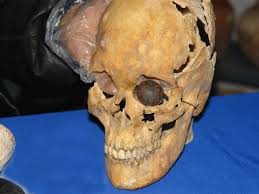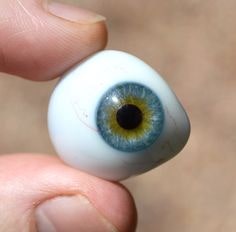The world’s oldest known artificial eye belonged to a woman aged 25–30, discovered during archaeological excavations in Shahr-e Sukhteh (Burnt City) in Sistan and Baluchestan Province. Studies suggest her remains date back approximately 4,800 years.
The Shahr-e Sukhteh Artificial Eye
As mentioned earlier, the Shahr-e Sukhteh artificial eye is around 4,800 years old. Recognized as humanity’s first handmade ocular prosthetic, it is hemispherical in shape, slightly over 2.5 cm (1 inch) in diameter, and crafted from lightweight bitumen paste. The surface is coated with a thin layer of gold, featuring a central carved circle representing the iris and delicate golden lines mimicking blood vessels. Tiny holes on either side allowed the prosthetic to be secured in place using a gold wire.
Archaeological research also indicates that Egyptian and Roman priests historically used painted cloth placed over the eye socket as early prosthetics.
Later, artificial eyes designed to fit inside the socket were made of gold with colored enamel. In the 16th century, Venetians shifted to glass as the primary material, leading to the term “glass eye.”
World War II and German Expertise
Due to Germany’s advanced glass-eye manufacturing techniques during World War II, the country became the epicenter of glass prosthetic production. Post-war, German physicians traveled globally to share their methods. To this day, glass eyes continue to be produced and used in Germany.

Modern History of Artificial Eyes

When German-made glass eyes became less accessible, the United States introduced acrylic prosthetics. In the U.S., most custom ocular prosthetics are now made from PMMA (polymethyl methacrylate), a resin that mimics glass’s shine and biocompatibility but is far less brittle. Acrylic quickly replaced glass and remains widely used today.
The Latest Innovation: Acro-Composite Prosthetics
Mahaan prosthetic eye clinic has recently pioneered a composite material for artificial eyes. Compared to acrylic prosthetics, these “Acro-Composite” eyes offer greater transparency, enhanced biocompatibility, superior impact resistance, and an appearance nearly indistinguishable from natural eyes.
This evolution highlights humanity’s enduring quest to restore both function and aesthetics through innovation—from ancient bitumen and gold to cutting-edge composites.




No comment